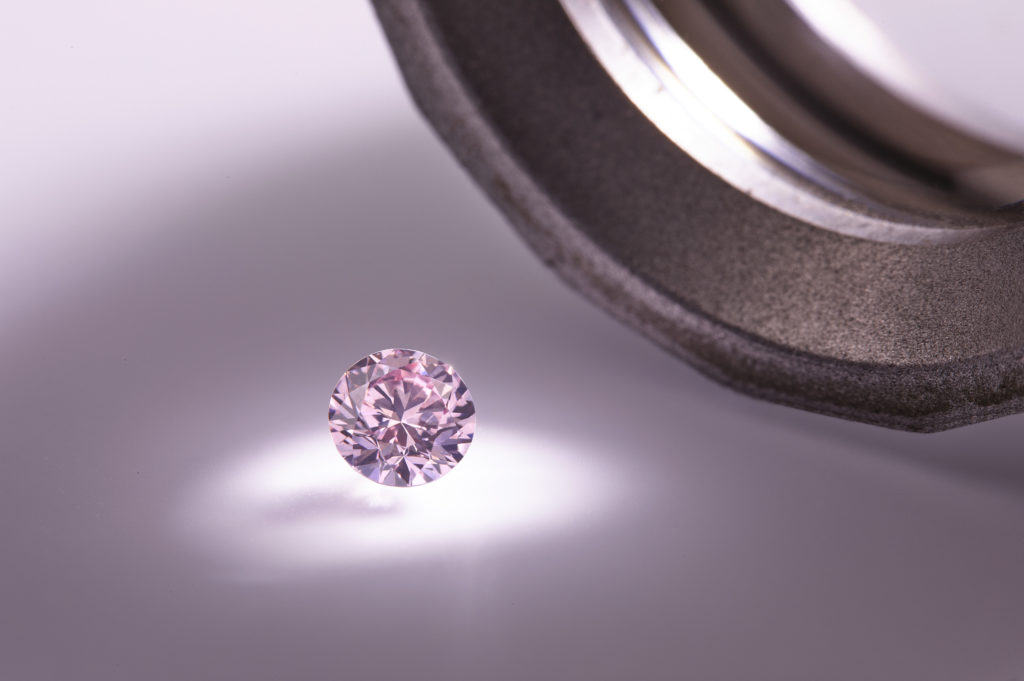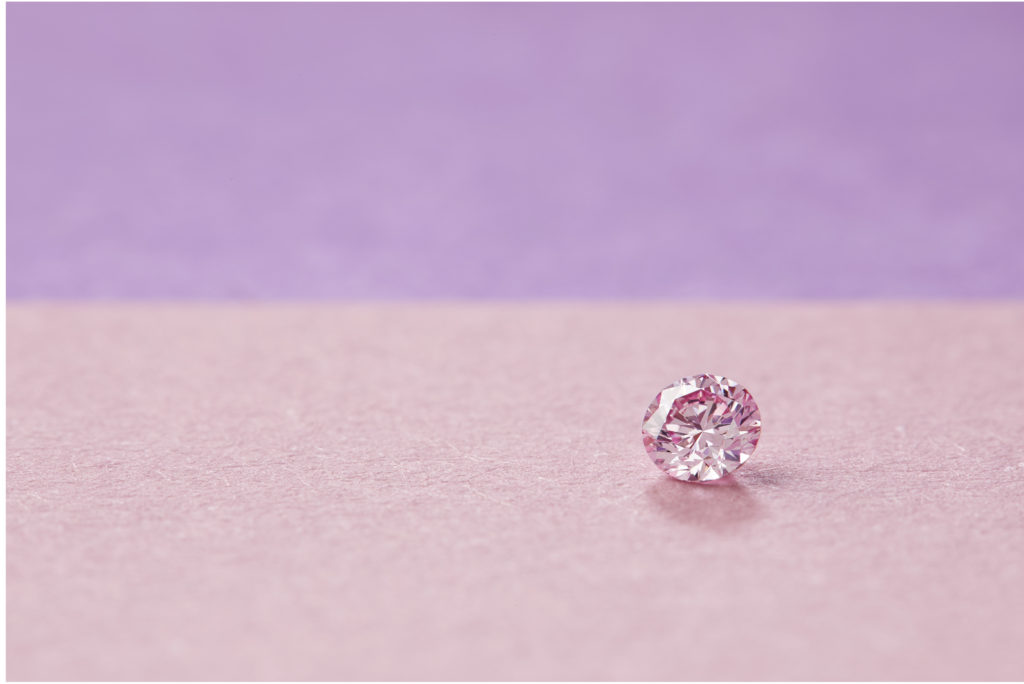From Argyle Mine Closure to a New Beginning
This article originally appeared in Australian Mining December 2020. You can view the original article here, pages 22-23.
No mine in the world has produced rare pink diamonds that can compete with the vibrancy and colour depth of those unearthed at Rio Tinto’s Argyle mine in Western Australia.
The pink diamonds found in the mines of India, Brazil and Russia also don’t compete with the character of Argyle’s famous gems.
The abundance of Argyle’s pink diamonds fit into just a small bucket in any given year, with Australian Diamond Portfolio executive director Anna Cisecki saying they represent only one of every 10,000 gem-quality diamonds produced at the mine.
Further, they represent less than 1 per cent of the world’s supply of diamonds, putting them in a much-elevated position to yellow diamonds that comprise around 60 per cent of the fancy-colour diamond market.
This scarcity has given pink diamonds inflation protecting qualities and steadily increased their prices by 11 per cent in the past 15 years, outperforming the Australian Securities Exchange, which returned 7.9 per cent.
“They can be relied on to maintain their value when financial markets wobble and they are also truly limited in supply, which is one of the reasons why the increasing demand has pushed their prices so much in the last 15-20 years,” Cisecki tells Australian Mining.
Investors of pink diamonds also enjoy much lower volatility compared with those investing in equity markets and precious metals such as gold and silver.
This was proven during the global financial crisis when pink diamond prices remained steady and those of gold and silver tumbled. This year, pink diamonds have avoided the impact of COVID-19.

The value of a pink diamond is judged by its shade and intensity.
The volatile share markets, money printing and low interest rates that characterise today’s uncertain economic climate, coupled with the closure of the Argyle mine in early November, have all contributed to the soaring demand of pink diamonds.
They have proven very resilient and strengthened in value during 2020, with the pending closure of the Argyle mine stimulating a wave of buying interest, according to Cisecki.
“Investors continue to seek benefits from the asset’s price growth this year,” Cisecki says.
“That is only natural in our view as the supply constraints that are hitting the market are encouraging investors to get a seat at the table now before the closure of the Argyle diamond mine helps kickstart another potential sharp (increase) in the price of pink diamonds, and give birth to what is likely to be a robust secondary market in pink diamond trading.
“Pink diamonds have a number of characteristics that investors find very attractive when putting together a diverse portfolio, and that’s what’s driving their performance for the 20-30 years since they were discovered.”
The appeal of the pink diamonds started with the owner and operator of the mine. When Rio Tinto launched operations at Argyle in 1983, the company sparked a popularity in pink diamonds that previously wasn’t there.
Since then, the value of the pink diamonds has soared and has become better understood by the market, Cisecki says.
Rio Tinto chief executive of copper and diamonds, Arnaud Soirat, says that there were very few people who believed there were diamonds in Australia 50 years ago.
“To arrive at this final chapter (of Argyle mine closure) has required vision, courage and determination to overcome significant challenges to enter new territory in diamond exploration, mining and marketing,” he explains.

Argyle was the world’s top producer of pink diamonds until its closure.
The record for a pink diamond sale is currently $US50 million ($71.3 million), and the largest rough pink diamond ever found at Argyle, named the Argyle Pink Jubilee, weighed 12.76 carats (however, it was tragically shattered during the polishing process and was subsequently donated to Museums Victoria).
The demand for pink diamonds today is strong enough to continue to live on in secondary markets even after the Argyle mine has stopped producing.
Australian Diamond Portfolio plans to continue to focus on pink diamonds and their expected robust secondary market.
The closure of the Argyle mine has put the production of pink diamonds at a standstill, Cisecki points out, as it takes a mine a minimum of 10-15 years to reach an optimal stage of producing saleable diamonds.
“Rather than spelling the end of the pink diamond investment story, I think the closure of the Argyle mine will mark a new beginning, and a highly profitable one at that,” Cisecki says.
“The number of jewellery collectors and investors, as well as the number of financial organisations buying pink diamonds to preserve wealth is exceptional. We expect demand for them to continue to rise meaningfully in the years ahead.”
In the meantime, Australian Diamond Portfolio has released The Legacy Collection, which features the last of Argyle’s pink diamonds.
The collection focusses on the lighter, sweeter shades of pink like cherry blossom and pink rose in sizes up to 0.14 carats to make them affordable and accessible to a much larger audience.
Representing a gift from the Argyle mine, The Legacy Collection’s diamonds are valued at $1000 to $10,000, in contrast with the $20,000-$25,000 usually fetched for an investment diamond of rarity and beauty, according to Cisecki.
The Legacy diamonds have been shaped and polished by a master cutter, with each piece inscribed and lasered with a unique Argyle ID number that matches its certificate to indicate its authenticity.
“Pink diamonds come in all different shades and intensities, ranging from a subtle hint of rose, to the rich colour of a raspberry. The richer and more vibrant the colour, the more expensive the stone,” Cisecki says.
“However, even the lighter shades of pink are an excellent store of value as they are still far rarer than white diamonds.”
Looking ahead, Australian Diamond Portfolio will keep a close watch on the Ellendale diamond project in the Kimberley region of Western Australia.
Although the mine has been dormant since 2015, Cisecki believes it is on track to restart production soon.
“I recall the (yellow diamonds) it produced were exquisite and may very well put Australia on the map again as far as the yellows are concerned,” she says.
This would be timely and welcomed as the world loses 90 per cent of its pink diamond supply upon Argyle’s closure.
For now, the industry will sit tight and wait for a new Australian diamond mine to reach production, even if it takes a decade.



